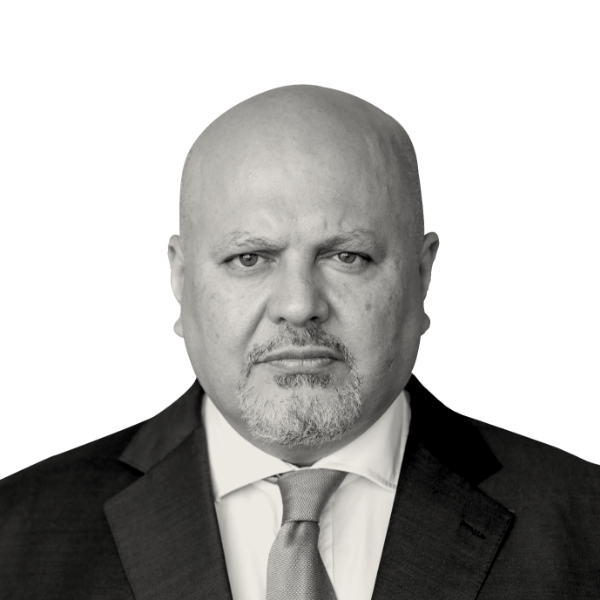The power of influence operations and well-funded state-sponsored propaganda outlets have been of central importance to Russia during its hybrid war in Ukraine. Influence operations have often complemented both military action on the ground and cyberattacks in an attempt to deepen divisions in societies supportive of Kyiv, shape perceptions among otherwise nonaligned audiences, and reinforce the Kremlin’s strategic objectives worldwide.
Over the past year, analysts and observers have—justifiably—focused most on Russia’s malign activity on the battlefield, online, and in the information space in Europe. However, as we forecast the future of hybrid warfare with global impacts, we should be aware of influence activities that the Kremlin continues to conduct in geographies and languages further afield. In Africa and the Arab world, for example, Russia’s multifaceted operations continue apace, relying on both overt and covert means, online and off, to achieve its geostrategic aims of promoting Russia’s international image and cultivating economic and political leverage in the region.
In Latin America, Russia has sought to reach local audiences primarily through its state-sponsored media arms and their attendant social media presences. While Latin America has been a focus for Russia’s media strategy for more than a decade, recent flashpoints—and what appears to be increasing success in landing messages and shaping discourse—highlight the importance of understanding the mechanisms through which an audience from any part of the globe might be influenced through local coverage.
Russian Propaganda Index Shows State Media’s Widespread Influence in Latin American Nations
The RPI measures the proportion of propaganda flow to
overall news traffic on the internet; these measures
represent Jan. 1 to May 10, 2023.
Source: Microsoft AI For Good Lab
Russia’s influence approach to Latin America relies heavily on its overt media properties, led chiefly by RT en Español, the Spanish-language arm of Russia Today that launched in 2009. In recent years, the network has claimed a live television audience of 18 million in Latin America, while the outlet’s following across several social media platforms surpasses Spanish-language offerings from international competitors such as the BBC and CNN. Audience figures are further buttressed by deals signed with more than 1,000 regional satellite TV providers to carry RT, 33 correspondents based throughout Central and South America, and the distribution of RT via media in Cuba, Nicaragua, and Venezuela, where state-affiliated outlets maintain broadcasting agreements with Russian state media. RT has been given further legitimacy by political figures who readily appear on—or even work for—the network. The breadth of these networks enables Russian state-sponsored media to reach audiences with coverage on flashpoints or international events deemed either out of scope or too expensive for major domestic Latin American media outlets to cover.
RT’s coverage is widely consumed in the region. Microsoft’s AI for Good Lab developed a Russian Propaganda Index (RPI) that monitors via Microsoft telemetry the flow of news from Russian state-controlled and state-sponsored news outlets and amplifiers. This index measures the proportion of propaganda flow to overall news traffic on the internet. An examination of RPI figures from the first four and a half months of 2023 confirmed that Cuba, Nicaragua, and Venezuela—to which the Kremlin’s preferred narratives are consistently distributed and amplified among local audiences—have the highest levels of Russian propaganda consumption in Latin America, with the Dominican Republic and the U.S. territory of Puerto Rico following closely behind.
Coverage of Local vs. International Events
Russia’s spin on local events can be seen most readily in its coverage of European and U.S. officials’ visits to the region: In one case, Russian state-sponsored media aggressively framed a routine visit as an “imperialist” quest to procure lithium—two-thirds of the proven reserves of which are in Latin America—for electric cars and military equipment. Mischaracterizing and misquoting officials, RT’s reporting often focuses on negative local sentiment, even when this represents a minority view. Efforts to cover local news have been partially responsible for RT’s and Sputnik’s substantial regional footprint. RT accounts for 51 percent of all Russian propaganda consumption in Latin America and is the most visited Russian propaganda site in every Spanish-speaking nation. Sputnik, meanwhile, accounts for an additional 23 percent of Russian propaganda consumption in Latin America, with more than 90 percent of its traffic coming from the Spanish-language Sputnik Mundo and the Portuguese-language Sputnik Brasil.
These two sites have remained the most visited Russian propaganda sites in Latin America while traffic originating from many Western countries to them dropped after RT faced sanctions following the February 2022 full-scale invasion of Ukraine. After the EU suspended their broadcasting rights, observed traffic to RT and Sputnik consumption dropped by upward of 80 percent in the EU.
While RT and Sputnik’s Footprint has Diminished in the European Union, It Remains High in Latin America
The two media outlets account for a large share of Latin America’s Russian propaganda consumption.
Source: Microsoft AI For Good Lab
Looking Forward
Notwithstanding legitimate concerns about overstating the effectiveness of Russian propaganda in the global south, the fact remains that Russia has placed a large bet on a top-down strategy in Latin America. With overt state media leading a multipronged strategy, Russia’s influence apparatus has proved successful insofar as RT and Sputnik have maintained a consistent audience share despite the downward pressures of sanctions and online moderation of state propaganda outlets during the war in Ukraine.
Clint Watts is the leader of the Microsoft Threat Analysis Center (MTAC). He leads the team’s efforts to detect and disrupt foreign malign influence efforts affecting democracies around the world. Prior to joining MTAC, Watts was the founder of Miburo, a digital analysis and consulting company acquired by Microsoft in July 2022. He is a former U.S. Army infantry officer, FBI Special Agent, Executive Officer of the Combating Terrorism Center at West Point, consultant to the FBI’s Counter Terrorism Division and National Security Branch, and analyst supporting the U.S. Intelligence Community and U.S. Special Operations Command. Author of the book Messing with the Enemy: Surviving in a Social Media World of Hackers, Terrorists, Russians, and Fake News, Watts’s writing has also appeared in a range of publications, including The New York Times, The Washington Post, The Wall Street Journal, Foreign Affairs, Foreign Policy, The Daily Beast, Politico, Lawfare, War on the Rocks, and The Huffington Post.

 with support from
with support from



